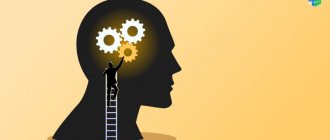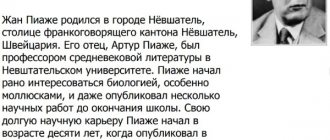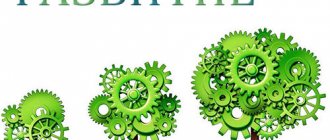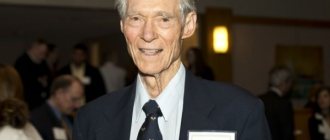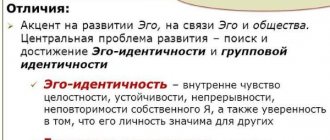Jean William Fritz Piaget is a psychologist, an outstanding Swiss research scientist, Doctor of Philosophy, born in August 1896 in the Swiss city of Neuchâtel, who became famous for his work on the study of the psychology of children and the creation of a theory of cognitive development. He founded the Geneva School of Genetic Psychology, and later developed his approach into the science of the nature of knowledge - genetic epistemology. Jean Piaget: mental development of the child.
Jean Piaget: a short biography
At the age of 11, Jean published his first work on rare birds - albino sparrows. Subsequently, continuing his studies, he rapidly built a scientific career - before he was even 20 years old, he was already considered an excellent scientist studying mollusks.
In 1918, Piaget defended his dissertation in natural sciences and received a PhD from the Neuchâtel Institute, and he also studied for some time at the Zurich Institute. During his studies, the scientist wrote two works on philosophy, but later he rejected them, as he believed that these were just the thoughts of a teenager. Even at this time, he began to get involved in psychoanalysis; at that time it was a fairly popular direction of psychological thought.
After Piaget received his degree, he moved from Switzerland to Paris, where he taught at a boys' school whose director was Alfred Binet, the creator of the test. While helping process IQ test results, Jean discovered that young children often answered some questions incorrectly. However, he focused not so much on the wrong answers, but on the fact that children make the same mistakes that are not typical for older people.
This observation led Jean to theorize that the thoughts and cognitive processes of children are very different from those of adults. He went on to create a general theory of developmental stages, which posits that people who are at the same stage of their own development exhibit similar general forms of cognitive ability.
In 1921, Piaget returned to Switzerland again and became director of the Rousseau Institute in Geneva.
In 1955, Jean Piaget headed the International Center for Genetic Epistemology as part of the Geneva Institute, which was created on the initiative of the famous scientist. Piaget remained in the leadership position of the center until the end of his life.
Analyzing the path of Jean Piaget in science, followers of the Geneva school of genetic psychology, founded by him, collectively argue that the scientist revolutionized fundamental research in the psychology of children, filling a previously little-studied volume with theory, and formed the basis for experimental research for several generations to come.
Throughout his life, he published more than sixty books and hundreds of scientific articles. Topics of his research:
- child's speech and thinking;
- psychology of intelligence;
- experimental psychology;
- child's moral judgments;
- genetic epistemology;
- the child's judgments and reasoning;
- selected psychological works.
J. Piaget's theory of mental development: basic concepts
Jean Piaget: mental development of the child, basic concepts.
The diagram is the source material for the development of a child’s intellect. This concept describes both mental and physical actions that are associated with understanding and knowing the world around us.
Assimilation is the introduction of new information into pre-existing patterns.
This process is a bit subjective, because we are trying to slightly change new experiences or acquired information in order to fit it into already formed beliefs.
Accommodation is the transformation of a pattern of actions.
Accommodation involves the very transformation of already existing patterns or ideas as a result of the emergence of new information or new impressions. During this process, completely new designs can be developed.
Balancing - finding a balance between assimilation and accommodation.
Intelligence is a mechanism of adaptation to the surrounding reality.
Centering is the concentration of the child’s consciousness on one side of the situation.
Egocentric speech is speech that does not take into account the position of the interlocutor.
How is children's thinking related to speech?
There is a direct relationship between a child’s thinking and speech. In order to learn to operate with words, sentences and abstract concepts, it is necessary to master speech. The faster and more actively speech develops, the better the quality of thinking develops. Feedback also takes place: the better developed thinking, the more coherent, logically structured and correct speech.
Stages of child intelligence development according to Piaget
Stages of child intelligence development according to Piaget from 0 to 2 years
Sensorimotor stage (0-2 years)
This stage of baby development involves understanding the world around us through actions, for example: looking at, grasping, biting, sucking, etc. Also during this period, progress in the development of innate reflexes is observed. At this stage, young children repeat events by experimenting with their bodies, for example: by hitting a toy they create noise, throw toys away, etc.
Pre-operational stage (from 2 to 6 years)
The second stage generally corresponds to preschool age (it must be taken into account that the age indicated in this theory is approximate). It was called pre-operative, because. At this stage, children do not understand operations - logical manipulations, and do not know how to think logically. Operations refer to procedures such as division, union and other transformations that require logical thinking. In other words, a child at this stage, especially at its beginning, is not able to use logical categories and operations: classify, compare, evaluate, measure, etc.
However, at this stage, a very important feature is observed - children master speech and begin to actively use symbolic thinking. Those. they use words and symbols to represent objects, groups of objects, images and ideas, and actively use imagination and symbolic play. Thus, cubes can become kingdom subjects or buildings, and a child’s hands can become airplane wings. Such play and the ability to “pretend” is actually an important cognitive achievement—a degree of abstraction not available to great apes and other animals.
Jean Piaget believed that children at this stage are unable to maintain attention on more than one aspect of a situation or characteristic, and in addition, children's logic is based on personal experience rather than generally accepted rules and laws. Thus, at the age of 3-4 years, children are not able to understand the concept of conservation of matter. The principle of conservation is the understanding that the amount of a substance will remain the same even if its shape changes. For example, if you pour water from a short and wide glass into a tall and narrow one, there will be the same amount of water in it. And if you roll out a ball of plasticine into an oblong sausage, the amount of plasticine will not change. Such operations become available to children only at the next stage of cognitive development.
To see what the logic of children at an early stage of the pre-operational stage of development (who have not yet mastered the principle of conservation of mass and quantity) looks like in life, watch this video. (https://www.youtube.com/watch?v=ZDNi4z5tdqU)
Another distinctive feature of this stage is children's egocentrism. In this context, this means that a child up to the age of approximately 3 years perceives the world as an extension of himself, exactly as he sees it, without realizing and often with difficulty accepting points of view that differ from his own. At this stage, it is natural for children to believe that everyone sees and perceives the world exactly the same as they do, and has the same feelings, thoughts, preferences and desires.
Between about 3 and 5 years of age, children begin to realize that other people have their own points of view, feelings and thoughts, and they perceive the world differently, in their own way. This phenomenon is called the model of the human psyche (or theory of mind, in English).
The pre-operational stage is replaced by the stage of concrete operations, at which children demonstrate a greater ability for logical thinking. We will consider this, as well as the fourth stage - formal operations, in detail next time, as well as valuable practical considerations and recommendations for parents.
In the meantime, we invite you to our program “Cognitive Science. Development of thinking." This online training will be useful to all those who want to learn to reason logically and consistently, quickly make effective decisions and find innovative approaches to difficult problems.
Good luck!
We also recommend reading:
- Storytelling
- Factors in a child’s intellectual development
- A selection of courses for children and parents
- How to teach a child to read: rules, tips and tricks
- Cognitive sphere of personality
- Speech thinking in children and adults: what is it and why is it needed?
- Genetic psychology
- Cognitive development. Part 2
- Theories of thinking
- Piaget's theory of cognitive development
- Conceptual thinking: by stages of cognition
Key words:1Cognitive science
Features of the development of a child’s thinking according to J. Piaget
Difficulty realizing
This feature lies in the fact that a child (up to 11-12 years old) cannot say how he came to this or that mental conclusion.
Incapacity for logic
It is the inability to understand the relativity of point of view. Overcoming the inability to logic relationships occurs as follows: at first the child has only his own point of view, then he accepts the point of view of others (from 7 to 8 years), then he can accept the “point of view” of objects (that is, put himself in the place of the object and in this perspective talk about relationships between objects).
Inability to synthesize
The inability to synthesize is expressed in the absence of the concept of part to whole. The use of juxtaposition and inability to synthesize do not at all mean incoherence. These phenomena are accompanied by a feeling of static or dynamic connection, the explanation of which is given to us by the analysis of syncretism.
Syncretism
Syncretism is the direct fusion of heterogeneous elements, as well as the belief in the objective connection of the elements thus condensed.
Syncretism is the opposite of juxtaposition. This is an excessive number of connections between objects, inadequate communication.
Precausality
This is the inability to establish cause-and-effect relationships. A characteristic feature of precausality is the inability to distinguish between physical causation and logical justification. During this period, the world is understood as a set of actions and intentions that are ordered and do not make room for random, inexplicable events.
Narrow field of observation
This feature of children's logic is a consequence of juxtaposition. Sometimes children notice much more things than adults, for example, they see a lot of details. However, due to the inability to establish relationships between objects, the child is unable to think about more than one thing at a time.
Transduction
The main feature of transduction is the absence of logical necessity.
In their reasoning, children operate with isolated cases, without achieving logical necessity, i.e. transduction, this is due to the fact that they do not yet need objective evidence of their correctness.
Insensitivity to contradiction
Jean Piaget: mental development of the child. The thoughts of a child aged 7-8 years are full of contradictory facts. It seems that the child is not sensitive to these contradictions and simply does not notice them.
These contradictions are divided into two types:
The first type is the “forgetfulness” contradiction. On one topic, a child has two contradictory opinions, between which he hesitates. Therefore, if a child is asked, he confirms one thing, and after a while he forgets and gives a completely different answer.
The second type is contradiction through the condensation of sensation: due to the impossibility of making a decision in favor of one of the contradictory judgments, children merge them into one or accept two at the same time.
Intellectual realism
Jean Piaget: mental development of the child. This is an inability for visual realism, that is, for objective perception.
The reality presented by the child is perceived together with objective reality. He lives alternately in each reality, and for some time forgets about the existence of others. He sees things as he imagined them. This is very well expressed in the first children's drawings.
For the egocentric thought of a child, intellectual realism is the most natural idea of the world. This indicates the impossibility of objective observation.
All these features of children's thinking, according to Piaget, have one common feature, which also internally depends on egocentrism. It consists in the fact that a child under 7-8 years old does not know how to perform logical operations of addition and multiplication.
My recommendations for parents
- When building a child’s development plan, pay attention to his age and work in accordance with it. For example, there is no point in teaching a two-year-old to read: he is not able to perceive symbols, but is ready to work only with specific examples.
- At each stage of development, it is worth presenting the child with as wide a range of age-appropriate activities as possible. For the baby - different sorters, pyramids, large insert puzzles, so that he can fully practice his trial and error technique. You can choose more complex toys of this type for a preschooler, and also help him overcome egocentrism by demonstrating different points of view. For younger schoolchildren, logic puzzles that involve concrete, familiar subjects and objects are perfect, and for teenagers, problems of an abstract and theoretical nature.
- If you have speech difficulties, try to develop thinking with the help of different games, toys, exercises and age-appropriate techniques. If there is a suspicion that the child does not think well enough for his stage of development, then it is worth trying to influence cognitive processes through speech: ask mental problems in accordance with age, offer to look for the causes and consequences of various phenomena, classify, imagine the probable outcomes of a particular event .
Egocentrism and decentration according to Piaget
Jean Piaget: mental development of the child. Thanks to the clinical method, Piaget established that egocentrism is a peculiarity of children's logic, children's ideas and children's speech. At some stages, the child views objects as he sees them, without seeing their internal relationships. The sun follows him. Piaget called this realism. Children up to a certain age cannot distinguish the subjective world from the objective. Realism can be intellectual and moral. The branches of a tree make the wind is intellectual realism, while moral realism does not take into account internal intentions. Children's ideas develop from realism to objectivity.
Decentration is a better position. The transition from egocentrism to decentration is characterized by cognition at all levels of development. He called this process the law of development. In order for the transition to occur, a special tool is needed. He believed that it was a progressively developing self-awareness, the development of self-knowledge arising from social interactions. To realize your Self, you need to free yourself from compulsion.
Criticism of the main provisions of Piaget's theory
Jean Piaget: mental development of the child. The very existence of the phenomenon of the child’s egocentric cognitive position, or at least its severity, “depth,” is criticized.
Some researchers argue that Piaget's tasks are difficult for a child because they are meaningless and emotionally indifferent. Or the fact that children make mistakes not because of a lack of logical structures, but because they poorly understand the wording of questions, do not know how to remember them, and interpret in their own way not only the task as such, but the entire experimental situation as a whole.
Piaget's work is characterized by excellent logic as well as inventive experimentation. Moreover, an interdisciplinary approach was directly implemented in his works. Piaget believed in the future of psychology, which should become the center not only of the human sciences, but also the center of all other sciences. He saw the future of psychology in its own development and the fertilization of its interdisciplinary connections, which, in turn, would open new horizons for other sciences.
Author of the article: Zhirukhina Ya.V.
Criticism of the teaching
Jean Piaget's theory was distinguished by its fundamentality and novelty. Nevertheless, there were many experts who criticized his approach. The psychologist was condemned for using only children from families with high social status in his experiments. The scientist almost did not take into account the influence of environmental factors. It is obvious that the intelligence of children from disadvantaged families develops according to a different scenario.
Some critics wrote that Piaget underestimated the thinking of 5-year-old children. Their level of intelligence is often less egocentric than the psychologist believed. Moreover, the age at which an individual reaches the stage of formal operations is always different. Despite criticism, Jean Piaget's ideas served as the basis for other theories about personality development.

